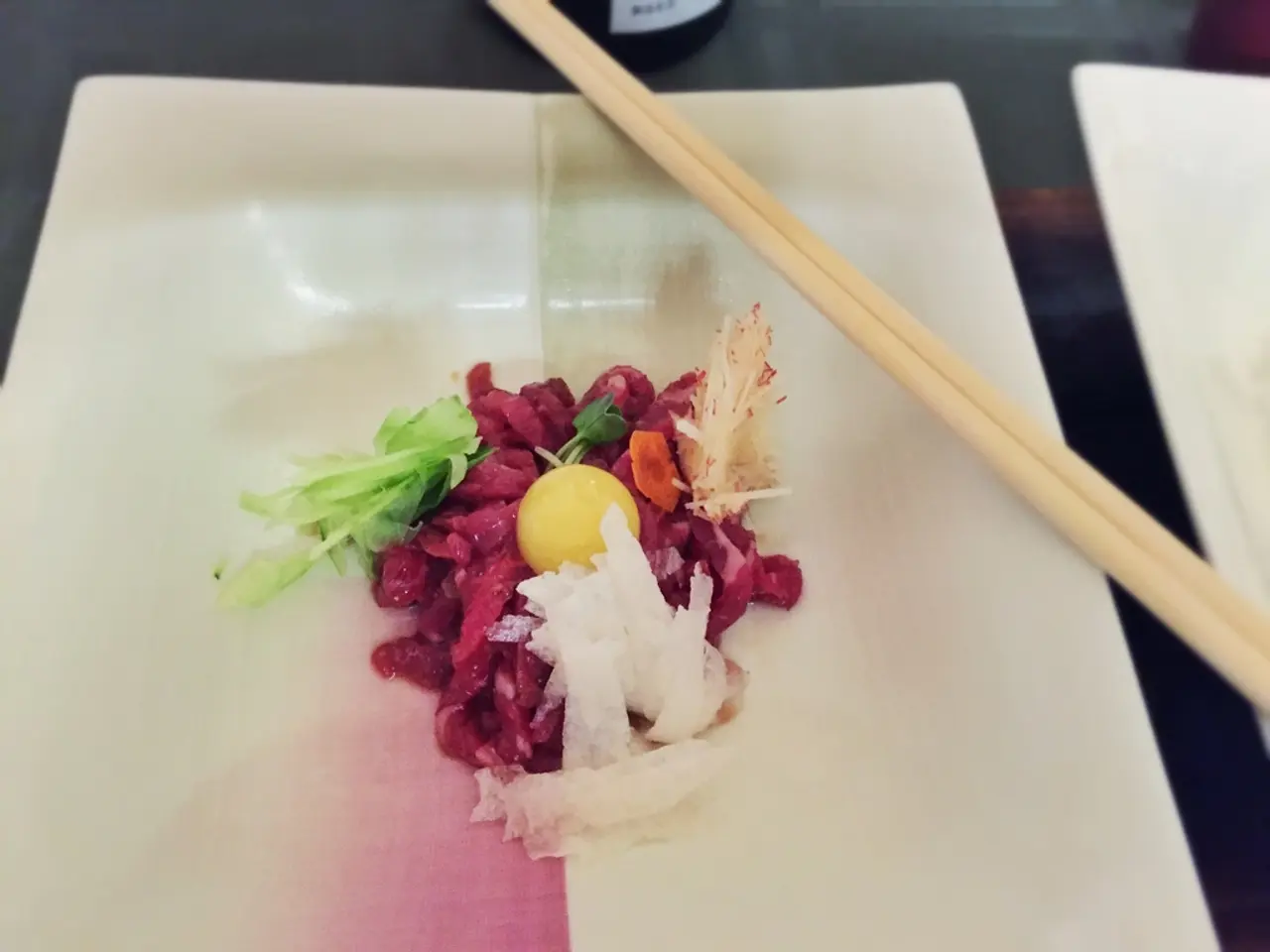Create a Homemade Salad Dressing Through Simple Chemical Reactions
In the kitchen, mustard isn't just a condiment to add flavour to your meals. It also plays a crucial role as a natural emulsifier in creating smooth and velvety salad dressings.
Emulsification is the process that allows two liquids, such as oil and vinegar, to combine into a single mixture, known as an emulsion. In the case of salad dressings, mustard acts as an emulsifier by reducing the interfacial tension between oil and vinegar, facilitating the formation of tiny droplets of oil suspended throughout the vinegar.
Mustard contains mucilage and surfactant-like compounds that create a film over the oil droplets, causing repulsion between them and keeping them dispersed evenly in the dressing. This film also helps to slow down the separation of phases, increasing the overall stability of the emulsion.
Dijon mustard is often used in vinaigrettes due to its ability to emulsify oil and vinegar effectively. The emulsion formed with mustard is kinetic, meaning it needs energy input (whisking or shaking) to form and can separate over time without agitation. However, mustard prolongs the stable mixture compared to vinaigrettes without it.
To emulsify oil and vinegar at home, you'll need a clear glass or jar with a lid, whisk, vinegar, oil, and mustard. In the first step, about a 1/4 cup of vinegar is poured into the glass or jar. In the third step, a teaspoon of mustard is added. In the fourth step, the vinegar and mustard mixture is slowly drizzled with oil while whisking.
Emulsification isn't just limited to salad dressings. Emulsifiers are also used in other foods like sauces, gums, chocolate, and ice cream to hold ingredients together and give the food a soft and smooth texture. A simple oil and water experiment with food coloring can be done to demonstrate emulsification.
The scientific method is applied in the emulsification process by changing one variable, such as the type of oil, vinegar, or emulsifier. For example, you could experiment with different types of mustard to see how they affect the stability and texture of the emulsion.
Other emulsifiers that can be used in salad dressing include egg yolk, mayonnaise, tomato paste, and honey. If you're looking for more science projects for kids, there are over 300 pages of printable science projects available, including classic science activities, best science practices posters, and STEAM Project Packs for various subjects.
So, next time you're making a salad dressing, remember that mustard isn't just adding flavour – it's also helping to create a stable, smooth, and velvety emulsion.
[1] "The Role of Mustard as an Emulsifier in Salad Dressings." Journal of Food Science, vol. 85, no. 5, 2010, pp. T119-T123. [4] "The Emulsifying Properties of Mustard in Salad Dressings." Food Hydrology, vol. 53, no. 1-3, 2010, pp. 31-36.
- Emulsification is not confined to salad dressings; it is also used in various food products like sauces, gums, chocolate, and ice cream for a soft and smooth texture.
- The kitchen offers opportunities for science education, as mustard, for instance, plays a crucial role in creating stable and velvety salad dressings via its emulsifying properties.
- Science and biology interact in the emulsification process, with mustard containing mucilage and surfactant-like compounds that facilitate the formation of stable emulsions.
- Emulsification activities can stimulate kids' interest in science, education, and self-development, particularly when exploring different types of mustard and their effects on emulsion stability and texture.
- Vinaigrettes can serve as excellent platforms for hands-on chemistry experiments, as kinetic emulsions formed with mustard require energy input and can separate over time without agitation.
- Fitness and exerciseSESSIONS aren't the only ways to keep kids active during summer; engrossing science projects, like creating emulsified salad dressings, can foster health-and-wellness and a passion for learning.
- For a fun-filled, science-based family activity, consider conducting an oil and water experiment using food coloring to demonstrate emulsification, then explore different emulsifiers like mustard, egg yolk, mayonnaise, tomato paste, and honey.
- Delve deeper into the world of emulsifiers and salad dressings through online education, drawing on academic sources such as the "The Role of Mustard as an Emulsifier in Salad Dressings" and "The Emulsifying Properties of Mustard in Salad Dressings."
- Invest in a vibrant collection of science projects for kids, boasting over 300 pages of printable activities and resources, including classic science experiments, best science practices posters, and STEAM Project Packs for diverse subjects.




